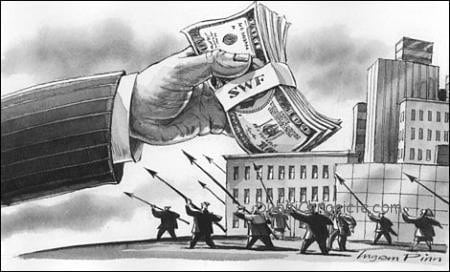
Ultra-low oil prices will continue to limit cash available to sovereigns in the Gulf Cooperation Council countries over the near term. Clearly GCC governments will be under pressure to find new sources of funding for necessary investment in capital goods projects. A new report from Standard & Poor’s projects a funding gap as large as $270bn over the next three years between capital spending for projects by Gulf sovereigns and project contracts awarded, and a difference of $50bn for project contracts awarded in the infrastructure sector. The ratings agency thinks that the region’s governments may choose to either borrow more directly or through government related entities (GREs), or turn to more financially innovative solutions such as public private partnerships.
Governments in the GCC will spend as much as $480bn over the next four years, of which between 60% and 70% will be earmarked towards projects, some $330bn or so, and of that, $50bn will be allocated specifically to infrastructure, such as transport. This contrasts, says the credit rating agency with the $604bn worth of potential projects in the pipeline over the period that are either in the planning stage or have already been awarded covering the 2016 and 2019 period, which leaves a substantial funding gap. The ratings agencies projections do not however include funds that will likely come from special funding vehicles such as the Saudi Industrial Development Fund or ADIA. These institutions will, of course, continue to help fund individual countries’ development needs.
Countries with the most substantial investments over the period include Saudi Arabia, Kuwait and Qatar, which together encompass around 92% of projected capital spend in the region over the period. Each country has its own policy, though it is likely that all will have to trim expectations of what can be financed should the reduction of state revenues begin to bite. Kuwait is a case in point. The interim public finance figures for the first nine months of fiscal year 2015/16 (FY2015/2016) reveal the resilience of government spending despite the low oil price environment. Although the sovereign reported a decline in overall spending in 2015, wages, salaries and capital spending were up for the period, according to analysts at National Bank of Kuwait in a note issued at the beginning of February. “The rise in capital spending highlights an accelerated pace of project execution. The latter of course continues to support economic growth. Meanwhile, government revenues were off, largely due to the decline in the price of oil. As a result, the government has recorded a deficit of KWD2.5bn during the nine-month period. We estimate FY2015/2016 will close with a deficit of KWD4.3bn before the transfer to the Reserve Fund for Future Generations (RFFG), or 10.8% of GDP,” says the bank. However, warn analysts at both NBK and Standard & Poor’s, that any analysis distinguish between capital expenditure and spending on capital goods projects as most sovereigns in the region will maintain capex spend, particularly on socially sensitive areas such as health care.





































